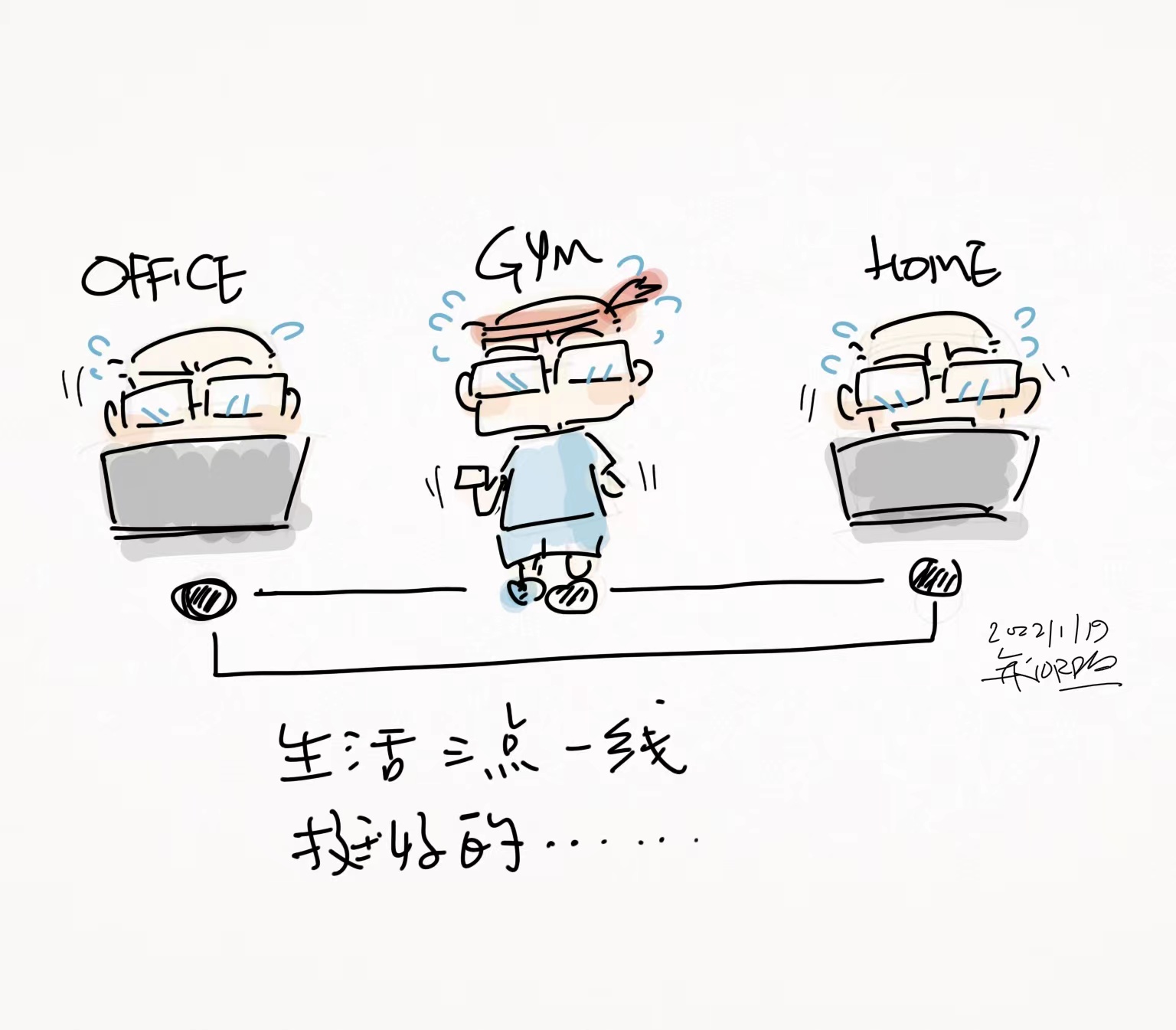
1-19 #3Pt1Line : Samsung unveils Exynos 2200; LGD is going to expand its small and medium-sized OLED plant in Paju; Samsung Galaxy Note is likely to return sometime in 2022; etc.

Intel has chosen the Greater Columbus area to build a new factory that it intends to invest up to USD20B in to expand semiconductor capacity. The new plant will employ 3,000 workers and will be situated on a 3,190 acre plot of land near the Columbus suburb of New Albany. It is unclear when the factory will be built, as it requires incentives from Congress, which is currently debating the CHIPS Act to bring semiconductor manufacturing back onshore.(CN Beta, Yahoo, Biz Journal, Seeking Alpha, Columbus Dispatch)

Qualcomm’s CEO, Cristiano Amon, has revealed that the next-generation flagship processor after the Snapdragon 8 Gen1 is the Snapdragon 8 Gen2. He has explained that the reason why the three-digit designation of the Snapdragon 8 series chips was canceled is to simplify consumers’ cognition. With the new naming system, there is no need to identify or confirm the size of the numbers, users only need to know the generation.(Gizmo China, My Drivers, The Verge)

Vodafone, Qualcomm and Thales have joined forces to demonstrate a working smartphone featuring iSIM (based on the ieUICC GSMA specification) – a new technology enabling the functionality of a SIM card to be integrated into a device’s main processor. This milestone paves the way for commercialization of the technology, which could be rolled out in a host of new devices that will use iSIM to connect to mobile services. The iSIM, which complies with GSMA specifications, embeds the SIM functionality into the device’s main processor, allowing for greater system integration, higher performance, and increased memory capacity.(Neowin, Qualcomm)
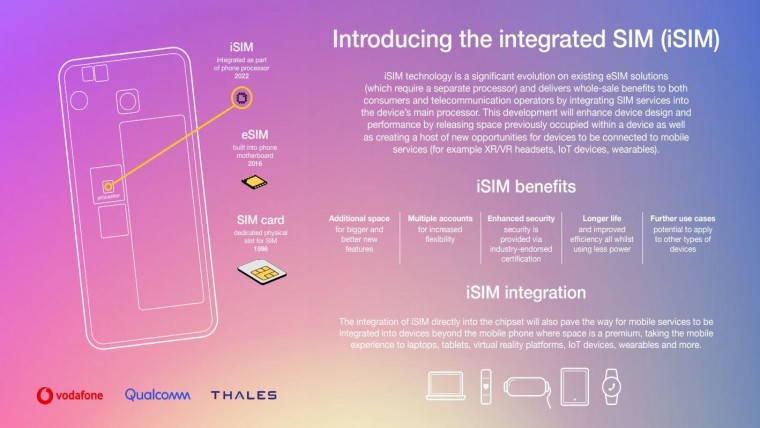
Samsung unveils Exynos 2200, which is a 4nm chip with 8 ARMv9 CPU cores, a neural processing unit for AI, and an Xclipse 920 GPU that brings RDNA 2 technology and support for features like hardware-accelerated ray tracing and variable rate shading to smartphones. Samsung says the GPU will bring the sort of gaming features that had previously been limited to laptop and desktop computers, but in an energy-efficient design optimized for mobile devices. The chip also has an image signal processor (ISP) that can handle cameras up to 200MP for still photos, or up to 108MP at 30 frames per second.(GSM Arena, Samsung, Liliputing, Android Authority)
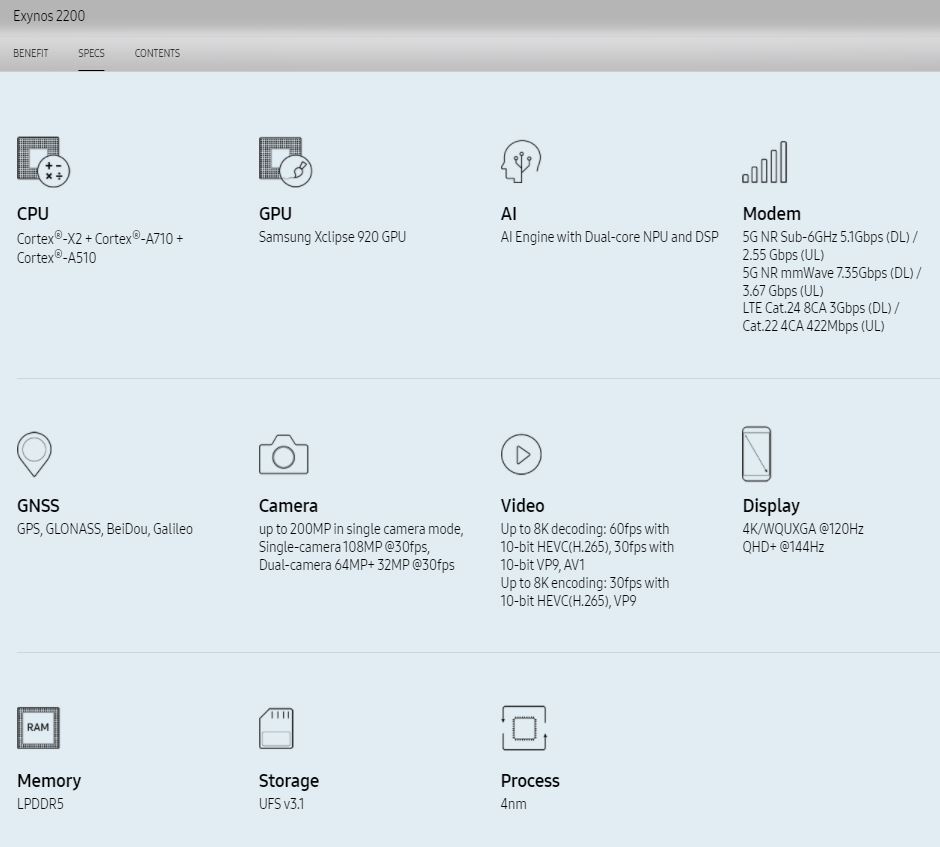
MediaTek has released a detailed “6G Vision White Paper“, based on the 3 major themes including timetable, key technology trends, and engineering realization factors. MediaTek predicts that the preliminary standardization work of 6G may start around 2024 / 2025. The first version of the specification should arrive around 2027 / 2028. After two stages of evolution, the initial commercialization should commence around 2029-2030. (GizChina, MediaTek whitepaper)
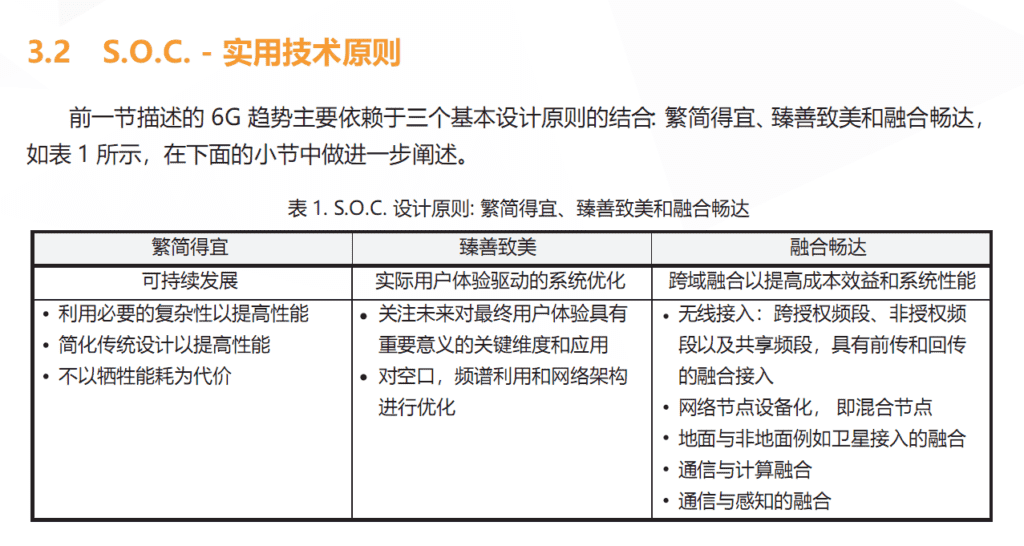
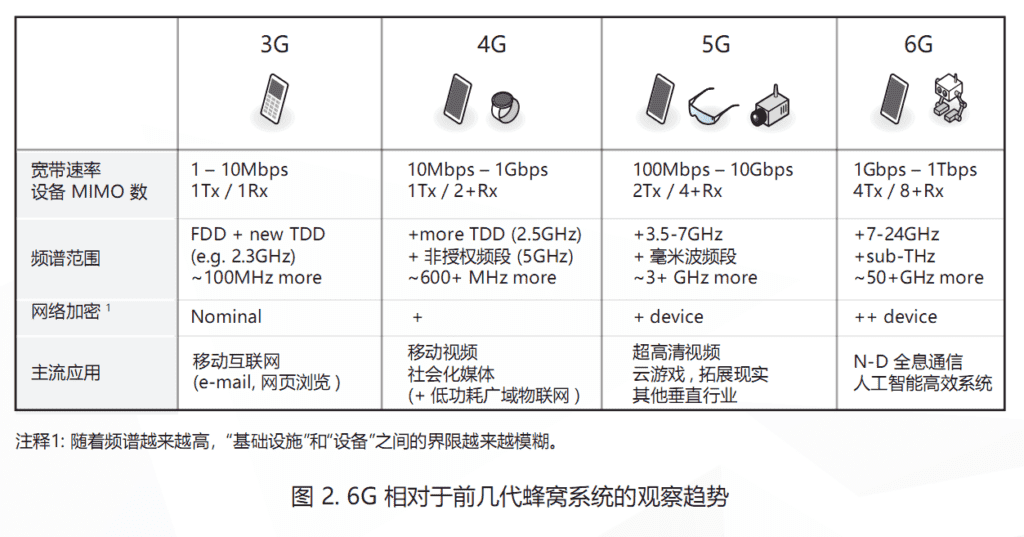
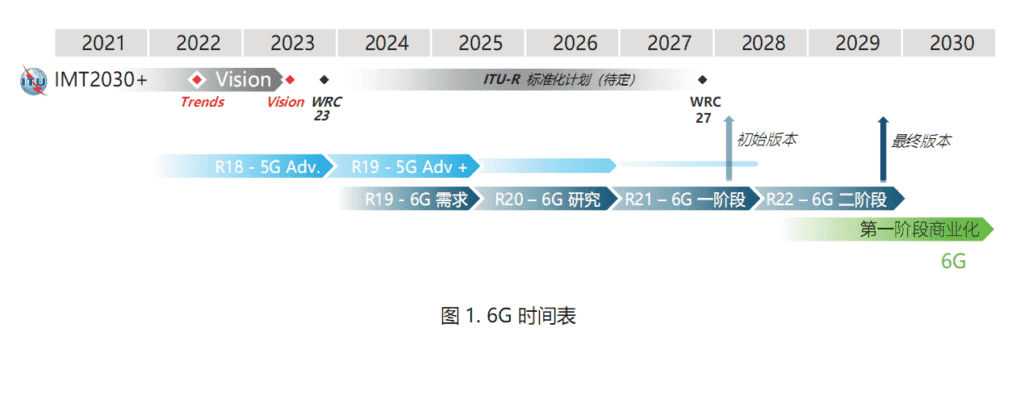

LG Display (LGD) is going to expand its small and medium-sized OLED plant in Paju. Small and medium-sized OLEDs are part of the KRW3.3T investment strategy that was announced in 2021. If core equipment is installed, Gen-6 OLED production capacity will double by 2024. It is expected to mainly be used as a supply chain for Apple mobile and tablet panels. (Apple Insider, ET News)
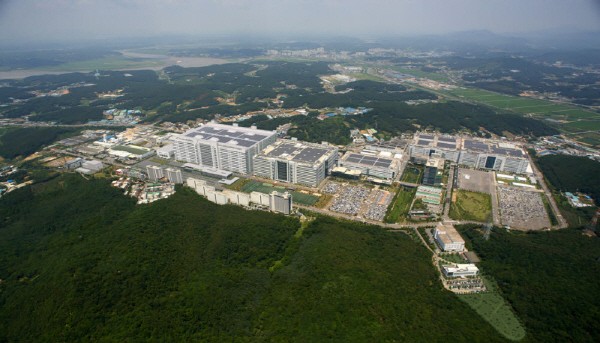
Samsung’s patent with WIPO reveals a “multi-foldable electronic device” that resembles a convertible laptop with a detachable display, except the latter can fold. This unique foldable device designed by Samsung features two main components: a screen and a keyboard base. It has a keyboard base capable of splitting in half. The upper half of the device, i.e., the foldable display, has a conventional aspect ratio when unfolded, and it connects to the lower half through a couple of hinges.(GizChina, SamMobile)
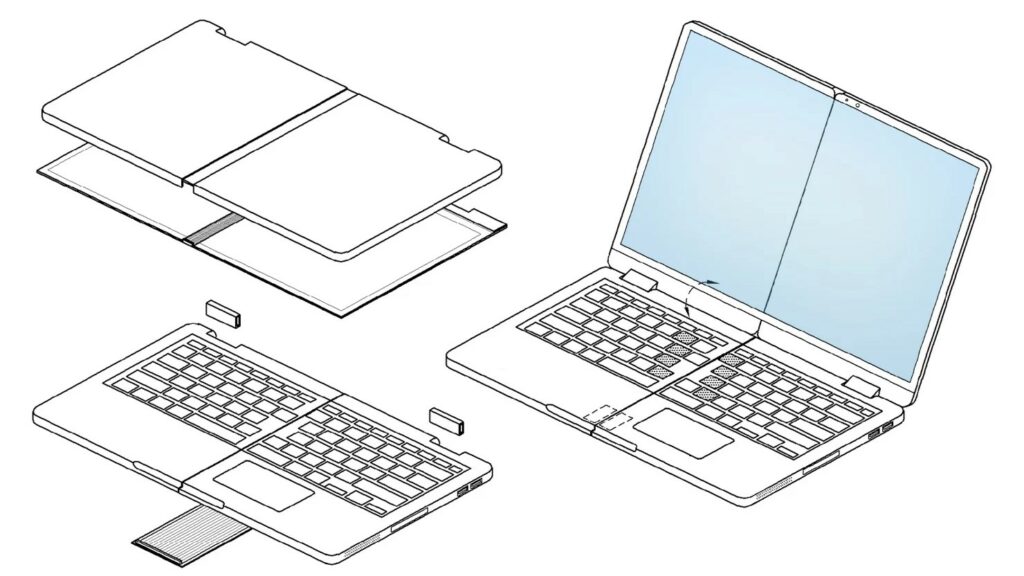
Google has reportedly picked a name for its rumored foldable smartphone. The device may be called the “Pixel Notepad”, though Google reportedly considered naming it the “Logbook”. It is rumored to be significantly less expensive than the Samsung Galaxy Z Fold 3. (9to5Google, Android Central)


LG Innotek is going to supply large-scale electronic cameras worth more than KRW1T to Tesla. The scale is said to be a ‘trillion-KRW worth’ of a big deal. LG Innotek’s electric cameras will be installed on Tesla Model Y and 3 for the North American and European markets, as well as to the electric truck semi, which is a cyber truck that will be released. Tesla will start operating its first gigafactory in Austin, Texas, within this month. It sought to diversify the supply of key parts for electric vehicles as Tesla started operating its fifth production base. Tesla received supplies for electric cameras from U.S. and Chinese companies. Tesla is showing great interest in South Korean companies due to the impact of the U.S.-China trade dispute. In 2021, Tesla also signed a KRW490B contract to supply electric camera modules with Samsung Electro-Mechanics.(CN Beta, ET News)
Canon has confirmed it will partially close its Zhuhai factory in southern China, with a full shutdown being considered. The plant is Canon’s only manufacturing base in the Chinese mainland for digital cameras, digital video cameras, image sensors and lenses , adding that its shutdown suggests that Canon has decided to relocate camera production away from the mainland. Canon Zhuhai, in which Canon owns an 83.1% stake and Canon China the rest, produced 12.29M lenses, 1.03M digital cameras and 94,000 video cameras in 2020. Set up in 1990, it had made investments totaling USD220M as of the end of 2020.(CN Beta, RFA, LTN, SCMP, Global Times, Yicai Global)
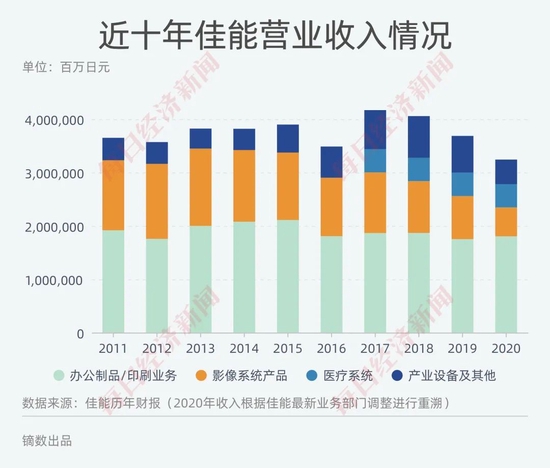

Contemporary Amperex Technology (CATL), China’s biggest producer of electric-car batteries, has launched a battery-swapping service called EVOGO to tap into the rapid growth of new energy vehicles on the mainland. EVOGO’s services, offered via a mobile app, will allow users to change their depleted car batteries at swap stations, instead of waiting for it to recharge. The battery block, called Choco-SEB (swapping electric block) by CATL, is a mass-produced battery developed specifically for shared battery swapping. It uses CATL’s latest cell-to-pack technology and has an energy density of more than 160Wh/kg. The company says a single block can provide a range of about 200 kilometers. The battery blocks can be used for passenger cars from the A00 class to the B and C classes as well as logistics vehicles.(CN Beta, Reuters, CleanTechnica, SCMP)
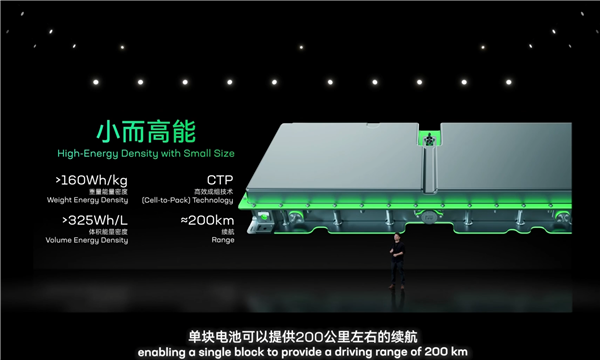
Samsung SDI is already in test production of the 4080 type cylindrical battery, which has a diameter of 40mm and a height of 80mm. Samsung plans to receive orders for the supply of such batteries from the largest players in the market, including Tesla and Lucid Electric. Samsung 4080 battery has entered the stage of final confirmation of the specification and will soon be put into mass production at overseas factories in Malaysia and Hungary. This battery is not inferior in performance battery type 4680. However, commercial use of the 4680 battery has reportedly been delayed until 2023.(CN Beta, DigitNews)
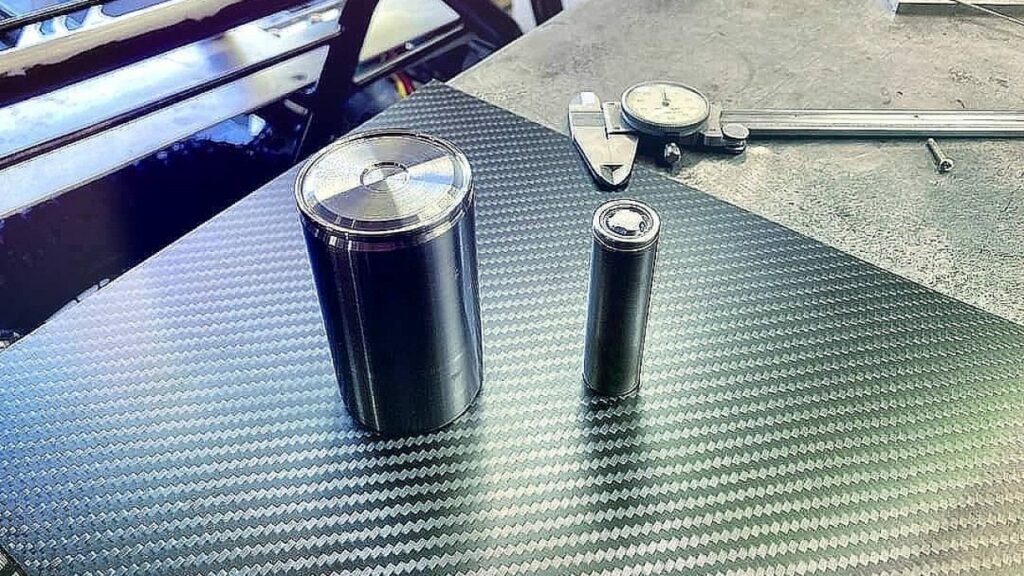

Eastman plans to invest up to USD1B in a material-to-material molecular recycling facility in France. This facility would use Eastman’s polyester renewal technology to recycle up to 160,000 metric tonnes annually of hard-to-recycle plastic waste that is currently being incinerated. The investment would recycle enough plastic waste annually to fill Stade de France national football stadium 2.5 times, while also creating virgin-quality material with a significantly lower carbon footprint. (CN Beta, Bloomberg, Recycling Today, PR Newswire)

Xiaomi has recently invested in a small tech startup Ultraception that focuses on UWB technology. Ultraception is established in 2019, and the company is currently worth CNY6.5M. Ultra-Wide Band technology, also commonly referred to as UWB in the industry, is a radio-based communication technology for short-range use and fast and stable transmission of data. It is set to replace the infrared light sensors found inside of our technology today because UWB technology consumes less energy compared to infrared technology. (Gizmo China, IT Home, Sina)
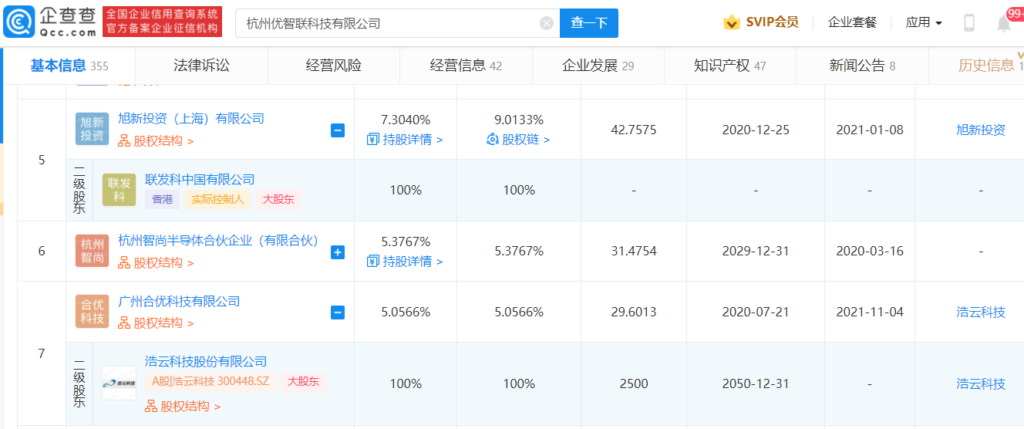

A competition legal expert, backed by a powerful litigation fund, is set to mount a multibillion-dollar class action suit against Facebook / Meta for breach of competition law on the basis that it abused its dominance of social networking in the U.K. for several years. If successful, the action would see Facebook having to pay USD3.1B (GBP2.3B) in damages to Facebook U.K. users. The unusual approach claims Facebook should pay its 44M U.K. users compensation for the exploitation of their data between 2015 and 2019.(CN Beta, BBC, TechCrunch, Yahoo)
Samsung Galaxy Note is likely to return sometime in 2022, although its biggest challenge may be finding a place in its lineup to actually fit the new device. Foldable phones are playing a vital role in Samsung’s long-term push right now, but in the meantime, it looks like the Galaxy Note line could make a comeback in 2022. (CN Beta, Phone Arena, Twitter)
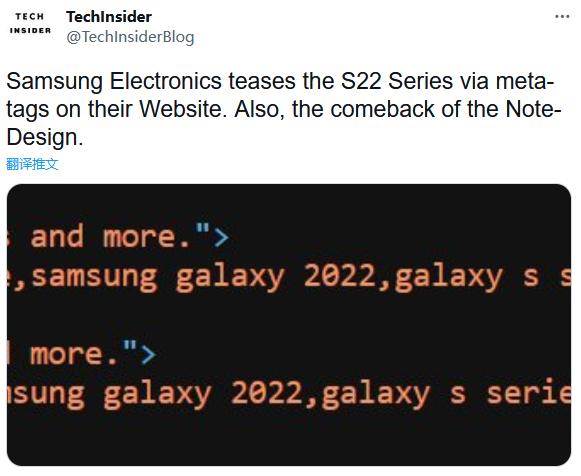
Xiaomi has officially confirmed that the Redmi Note series sales now exceed 240M units globally. Redmi’s first-generation Note is released in 2014. In the past 8 years, the Redmi Note series has sold 240M units and is now the most popular product line in Redmi’s history. This series will adhere to the price-performance ratio and will remain within the CNY2,000 (USD313) price range.(Notebook Check, GizChina, IT Home)
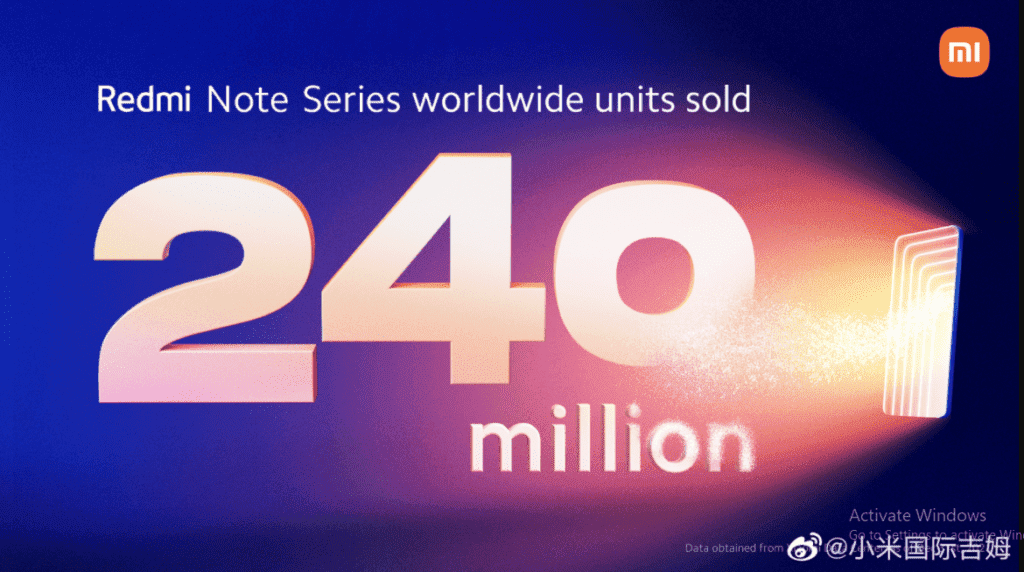
Strategy Analytics estimates realme’s Number Series was ranked 4th among the ‘New Age Smartphone Families’ with shipments of 40.6M units. It has been central to realme’s scale up to be the fastest smartphone vendor to 100M smartphone shipment units ever, taking only 37 months since the debut, in the history of smartphone industry. (Strategy Analytics, GSM Arena, Gizmo China)
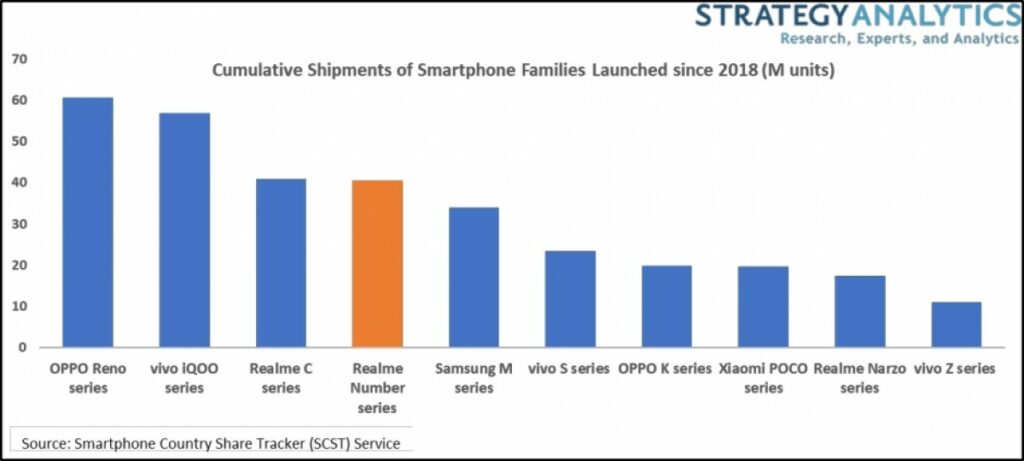
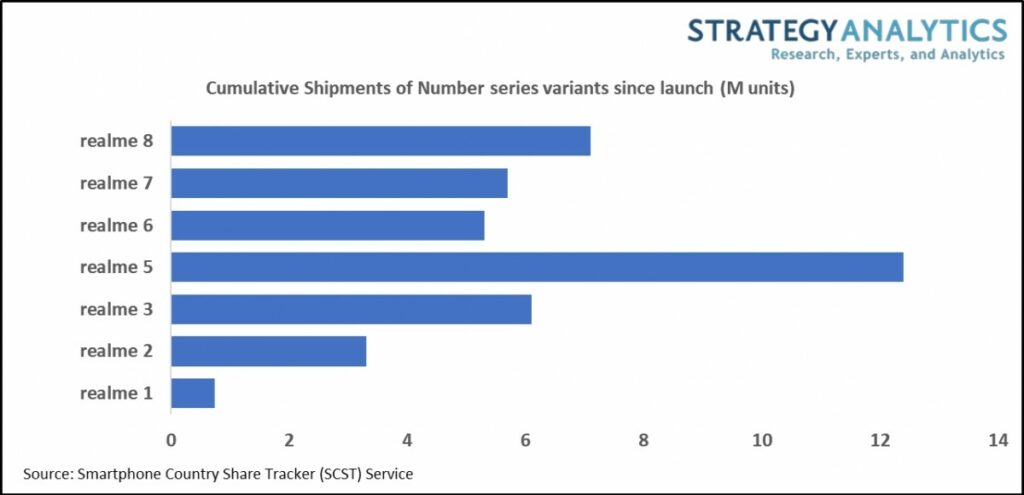
According to Canalys, Apple accounted for 22% of worldwide smartphone shipments in 4q21, thanks to strong demand for the iPhone 13. Yet overall shipments for the quarter grew just 1%, as vendors faced supply chain problems and a resurgence in COVID-19 cases. Samsung took second place, down from the top spot in 3Q21, with a market share of 20%. Xiaomi maintained its third-place position with a 12% share. OPPO and vivo completed the top 5 with 9% and 8% shares respectively. (Canalys, CN Beta)

vivo Y21e is launched in India – 6.51” 720×1600 HD+ v-notch, Qualcomm Snapdragon 680, rear dual 13MP-2MP macro + front 8MP, 3+64GB, Android 11.0, side fingerprint, 5000mAh 18W, INR12,990 (USD175). (Gizmo China, vivo, GSM Arena)
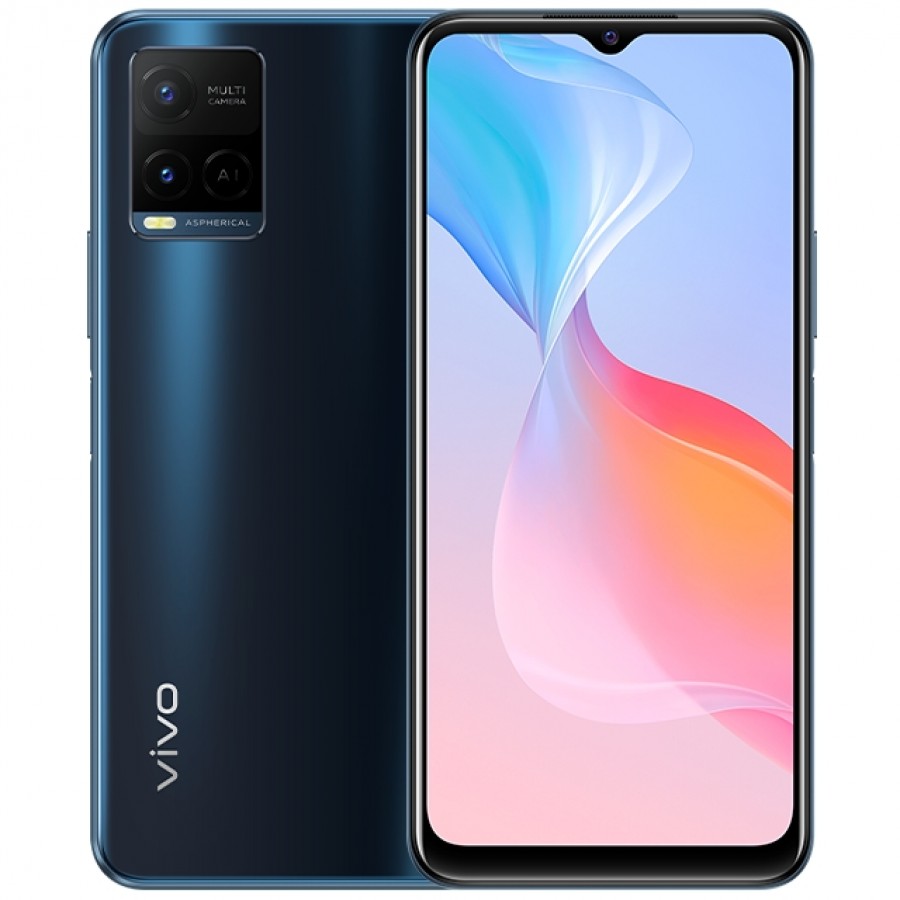
vivo Y55 5G debuts in Taiwan – 6.58” 1080×2408 FHD+ v-notch, Mediatek Dimensity 700 5G, rear tri 50MP-2MP macro-2MP depth + front 8MP, 4+128GB, Android 11.0, side fingerprint, 5000mAh 18W, TWD7,990 (USD290). (GSM Arena, GizChina, vivo)
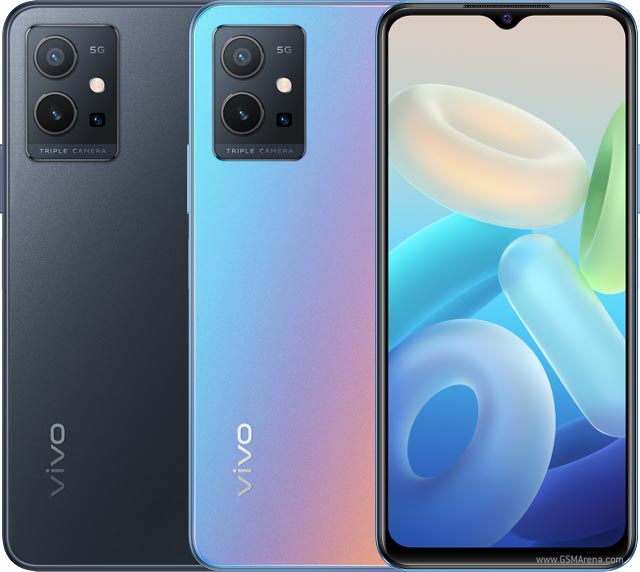
OPPO Reno6 Lite is launched in Mexico – 6.43” 1080×2400 FHD+ HiD AMOLED, Qualcomm Snapdragon 662, rear tri 48MP-2MP macro-2MP depth + front 16MP, 6+128GB, Android 11.0, fingerprint on display, 5000mAh 33w, MXN8,799 (USD433). (GSM Arena, Gizmo China, OPPO)
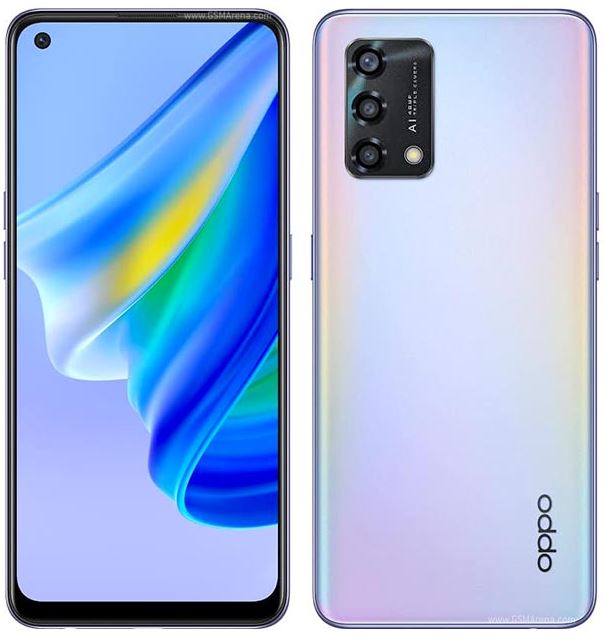

Microsoft has announced that it will acquire Activision Blizzard in an all-cash transaction valued at USD68.7B. Microsoft plans to add Activision Blizzard titles to its subscription service, which already has 25M subscribers. This acquisition will accelerate the growth in Microsoft’s gaming business across mobile, PC, console and cloud and will provide building blocks for the metaverse. (GSM Arena, Microsoft, Xbox)


Bloomberg’s Mark Gurman has indicated that Apple’s AR/VR headset will be expensive. He is predicting the product would cost around USD3,000. However, he says that Apple has discussed price points above USD2,000. He has pointed out that Apple will likely use the M1 Pro chip – or something similar – to the new AR/VR headset. Apple’s AR/VR headset is likely to focus on gaming, media consumption, and communication. (CN Beta, 9to5Mac, Bloomberg, Bloomberg, Apple Insider)

| Bloomberg’s Mark Gurman has revealed that Apple once internally discussed and prototyped a battery-powered smart speaker. (MacRumors, Bloomberg) |

Volkswagen AG has said that it is building a new electric vehicle (EV) battery system factory in eastern China’s Hefei city which will start production in 2023. It has said it would invest more than EUR140M (USD164M) in the battery plant by 2025. The factory’s initial capacity will be 150,000 to 180,000 battery systems a year for local EV production. Volkswagen has said it would likely double sales of its ID battery electric vehicles in China this year and aims to do even better but the automaker could be hamstrung by a shortage of semiconductors. The company sold 70,625 of its ID electric vehicles in China in 2021, missing its goal of selling 80,000 to 100,000 cars, with production also affected by regional COVID-19 outbreaks in addition to chip-related issues.(CN Beta, Reuters, Volkswagen, NDTV)
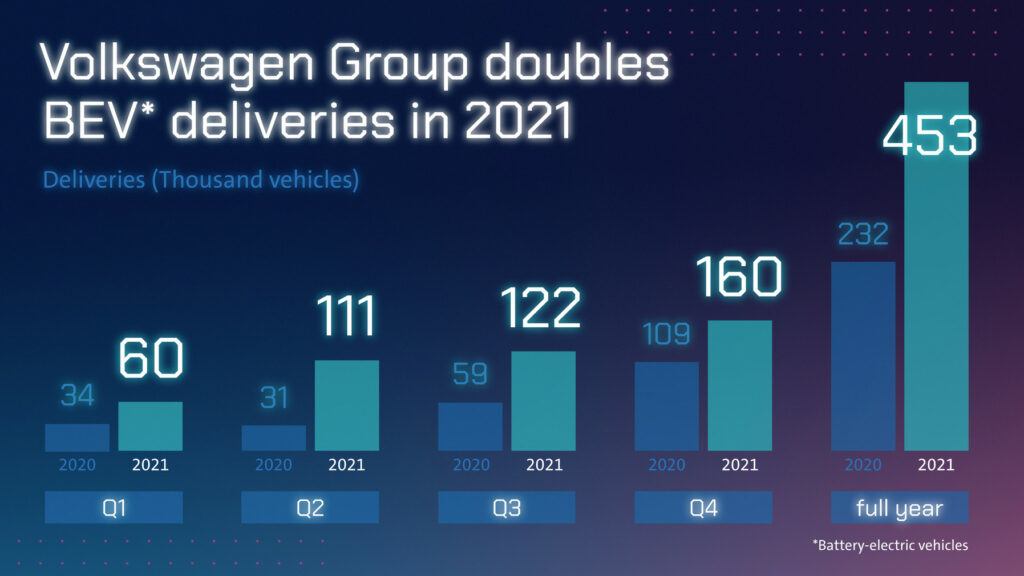
Chinese EV maker Eleksa has introduced the CityBug electric vehicle in South Africa. The Eleksa CityBug is the most affordable EV yet to hit the South African market at a price of ZAR230K (USD14,945). It is a two-door compact car which can seat four persons and it weighs about 450kg. The CityBug offers some decent features within its compact cabin to justify its price tag. (Gizmo China, ESI Africa, Trademag)
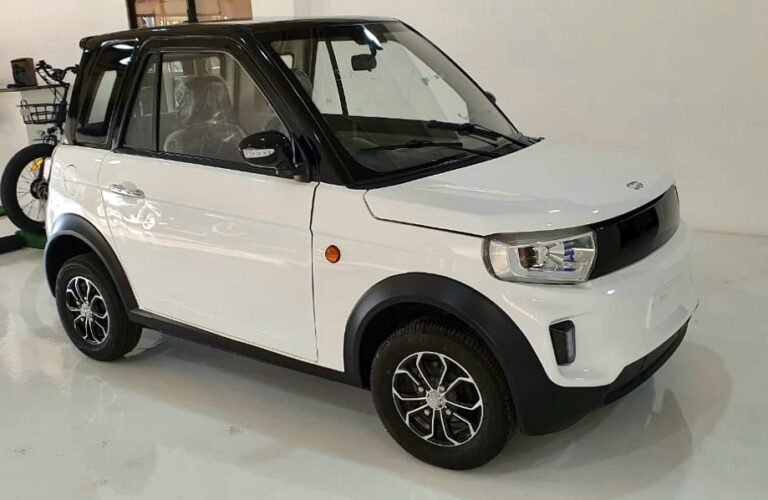
According to Bloomberg’s Mark Gurman, Apple’s so-called “CarKey” feature is set to come to Hyundai’s Genesis lineup in summer 2022. Hyundai already offers proprietary iOS apps, including MyHyundai with Bluelink and the Genesis Intelligent Assistant, which include the ability to remotely start, or unlock the doors of compatible vehicles. Adding support for Apple’s implementation of the digital key feature should make the functionality more seamless, and benefit from system-level Apple Wallet shortcuts. (The Verge, Bloomberg, Hyundai)
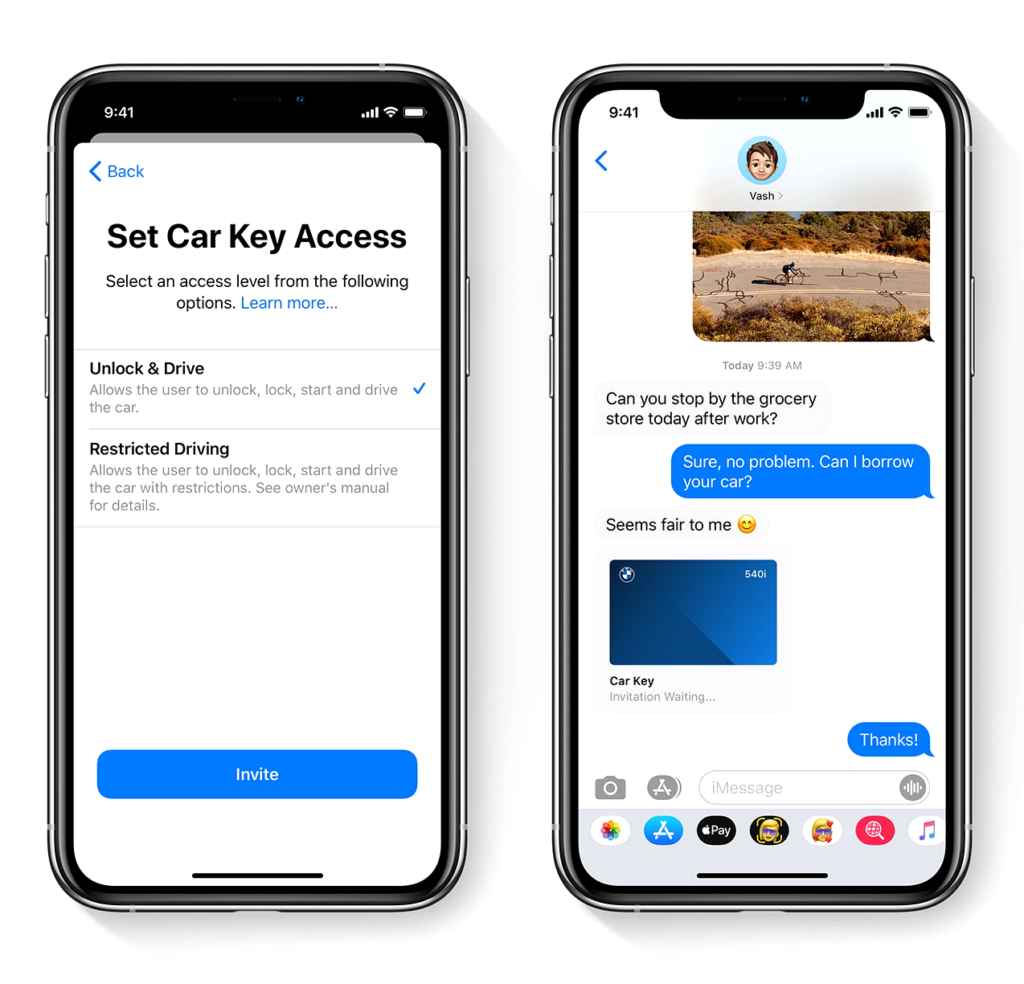
According to ACEA, In Dec 2021, passenger car registrations across the European Union declined by 22.8% to 795,295 units, marking the sixth consecutive month of decline. Most of the region’s markets faced double-digit drops, including the four major ones: Italy (-27.5%), Germany (-26.9%), Spain (-18.7%) and France (-15.1%). In fact, the only EU car markets that expanded last month were Bulgaria, Croatia, Latvia and Slovenia. Overall in 2021, sales of new cars in the EU fell by 2.4% to 9.7M units, despite the record low base of comparison of 2020. This fall was the result of the semiconductor shortage that negatively impacted car production throughout the year, but especially during 2H21. Indeed, 2021 total EU car registrations were still 3.3M units below pre-crisis sales in 2019. (My Drivers, ACEA, Reuters, Money Control)
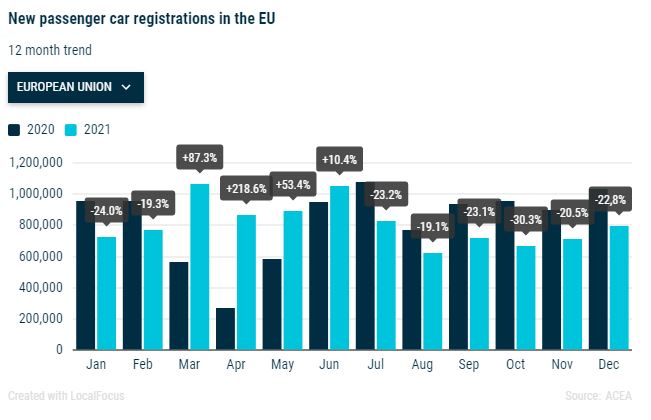

JD.com and Shopify have announced that they have come together to create a strategic partnership to give independent brands in the US a simple, trusted way to access consumers in China, while simultaneously enabling Shopify merchants worldwide to access JD’s quality supplier network. The partnership will link Shopify’s millions of merchants worldwide with JD.com’s 550M active customers in China who use the platform to find authentic, high-quality products. (TechCrunch, JD.com, IT Home, Sina)


Nomura and Toshiba have announced that they have successfully implemented the verification test of using “quantum encrypted communication” in financial transactions. Taking the transaction between investors and securities companies as an assumption, the simulated data such as stock entrustment hanging orders can be encrypted and sent, which can confirm that it has the same communication speed as the existing system. With the increasing threat of network attacks, we will continue to verify the practicality. (CN Beta, My Drivers, Nikkei)

One of the fastest-growing apps in China right now, by installs, is the central bank’s digital yuan wallet: 261M individual users (as opposed to enterprises), about 1/5 of the population, have set up e-CNY wallets so far, and CNY87.5B (USD13.78B) worth of transactions has been made using the digital fiat currency, Zou Lan, head of financial markets at the People’s Bank of China (PBOC). (TechCrunch, The Paper, SCIO)
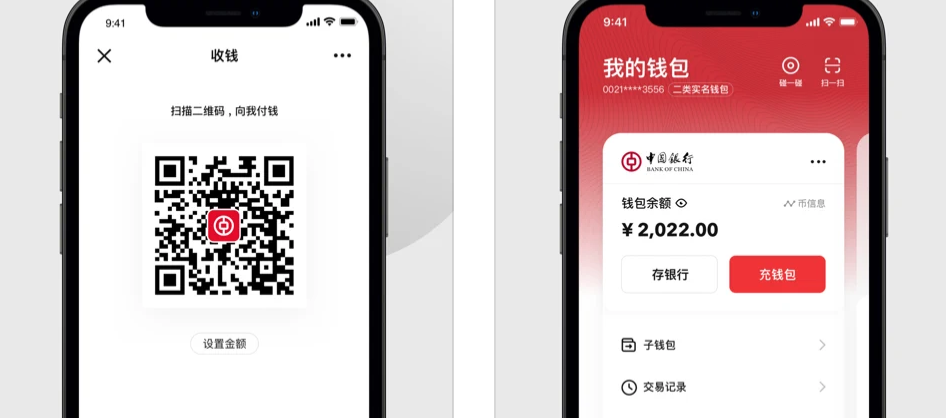
Lit Protocol has raised USD2.2M to build out its decentralized network that enables nonfungible tokens (NFTs) to act as access keys to exclusive content and experiences both online and in the real world. Lit Protocol is ramping up with big plans for the future of the blockchain-based internet. (VentureBeat, BlockTelegraph)